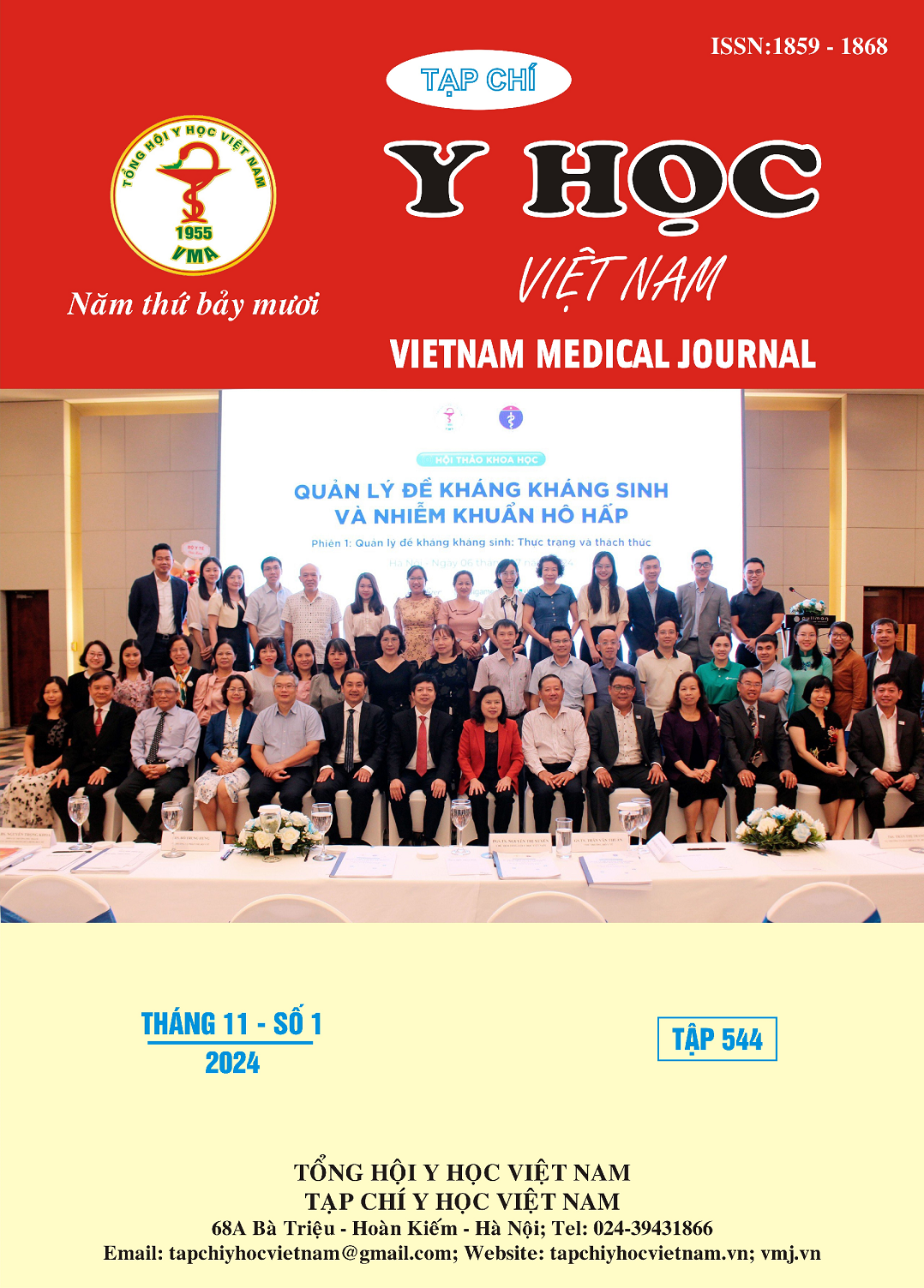ĐÁNH GIÁ KẾT QUẢ CỦA KỸ THUẬT CAN THIỆP ĐỘNG MẠCH TẠNG QUA ĐƯỜNG ĐỘNG MẠCH QUAY TẠI BỆNH VIỆN ĐẠI HỌC Y HÀ NỘI
Nội dung chính của bài viết
Tóm tắt
Mục tiêu: Đánh giá kết quả của kỹ thuật can thiệp động mạch tạng qua đường động mạch quay tại Bệnh viện Đại học Y Hà Nội. Phương pháp nghiên cứu: mô tả cắt ngang từ tháng 1 năm 2024 đến tháng 4 năm 2024, 23 bệnh nhân có chỉ định can thiệp động mạch tạng phù hợp để tiếp cận qua đường động mạch quay, với 23 lần can thiệp, có đầy đủ thông tin nghiên cứu, loại trừ các trường hợp thiếu thông tin hoặc không đồng ý tham gia nghiên cứu. Kết quả nghiên cứu: Trong nhóm nghiên cứ có 20 bệnh nhân nam, 3 bệnh nhân nữ, tuổi trung bình là 63.2 +/- 11.5. Bệnh lý ung thư gan nguyên phát (HCC) chiếm chủ yếu (48%), sau đó là bệnh lý phì đại lành tính tiền liệt tuyến (26%), các bệnh lý của thận, u xơ tử cung và nhóm C bệnh lý khác. Vị trí chọc mạch ở cổ tay và hõm lào giải phẫu trái chiếm ưu thế. Tỉ lệ co thắt mạch là 13% (3 ca), không ghi nhận biến chứng nặng như tắc mạch hay lóc tách. 91% các ca can thiệp tiếp cận động mạch thành công ngay từ lần chọc mạch đầu tiên, 87% đạt được nút tắc hoàn toàn mạch mục tiêu, 74% lâm sàng cải thiện tốt sau can thiệp. Kết luận: Can thiệp mạch tạng qua đường động mạch quay mới được triển khai trên thế giới cũng như ở Việt Nam. Đây là một kỹ thuật dễ thực hiện với độ an toàn cao, có thể thực hiện với các can thiệp nút mạch tạng trong ổ bụng, đặc biệt thuận lợi với các can thiệp nút mạch vùng tiểu khung. Vị trí tiếp cận động mạch quay tối ưu là ở hõm lào giải phẫu bên trái.
Chi tiết bài viết
Tài liệu tham khảo
2. Resnick NJ, Kim E, Patel RS, Lookstein RA, Nowakowski FS, Fischman AM. Uterine Artery Embolization Using a Transradial Approach: Initial Experience and Technique. Journal of Vascular and Interventional Radiology. 2014;25(3):443-447. doi:10.1016/j.jvir.2013.11.010
3. Hung ML, Lee EW, McWilliams JP, Padia SA, Ding P, Kee ST. A reality check in transradial access: a single-centre comparison of transradial and transfemoral access for abdominal and peripheral intervention. Eur Radiol. 2019;29(1): 68-74. doi:10.1007/s00330-018-5580-2
4. Bhatia S, Harward SH, Sinha VK, Narayanan G. Prostate Artery Embolization via Transradial or Transulnar versus Transfemoral Arterial Access: Technical Results. Journal of Vascular and Interventional Radiology. 2017;28(6):898-905. doi:10.1016/j.jvir.2017.02.029
5. Lee JW, Son JW, Go TH, et al. Reference diameter and characteristics of the distal radial artery based on ultrasonographic assessment. Korean J Intern Med. 2022;37(1):109-118. doi:10.3904/kjim.2020.685
6. Anatomical snuff box approach for percutaneous coronary interventions – Current status - PMC. Accessed May 26, 2024. https://www.ncbi.nlm.nih.gov/pmc/articles/PMC8514418/
7. Hadjivassiliou A, Cardarelli-Leite L, Jalal S, et al. Left Distal Transradial Access (ldTRA): A Comparative Assessment of Conventional and Distal Radial Artery Size. Cardiovasc Intervent Radiol. 2020;43(6):850-857. doi:10.1007/s00270-020-02485-7


